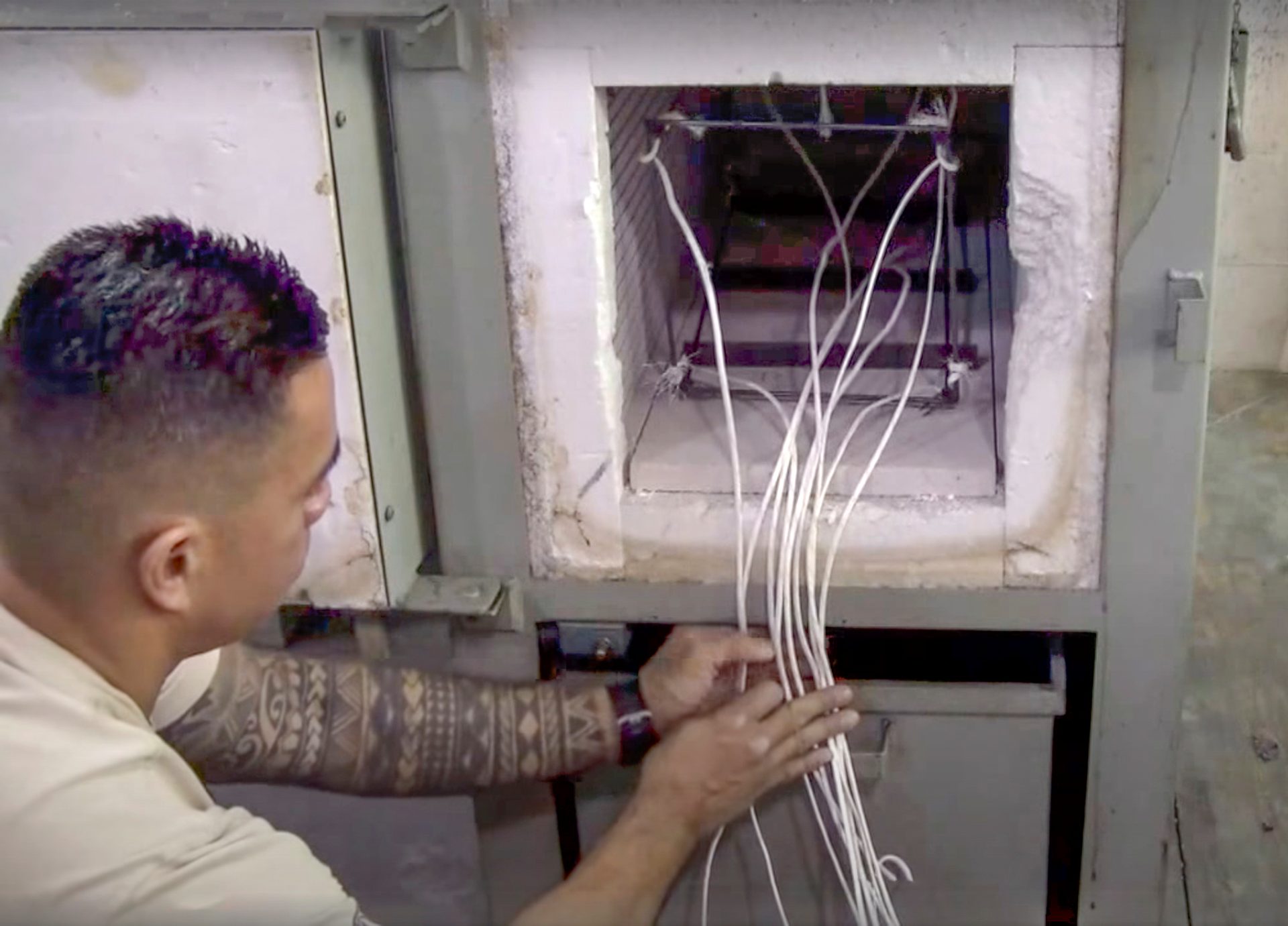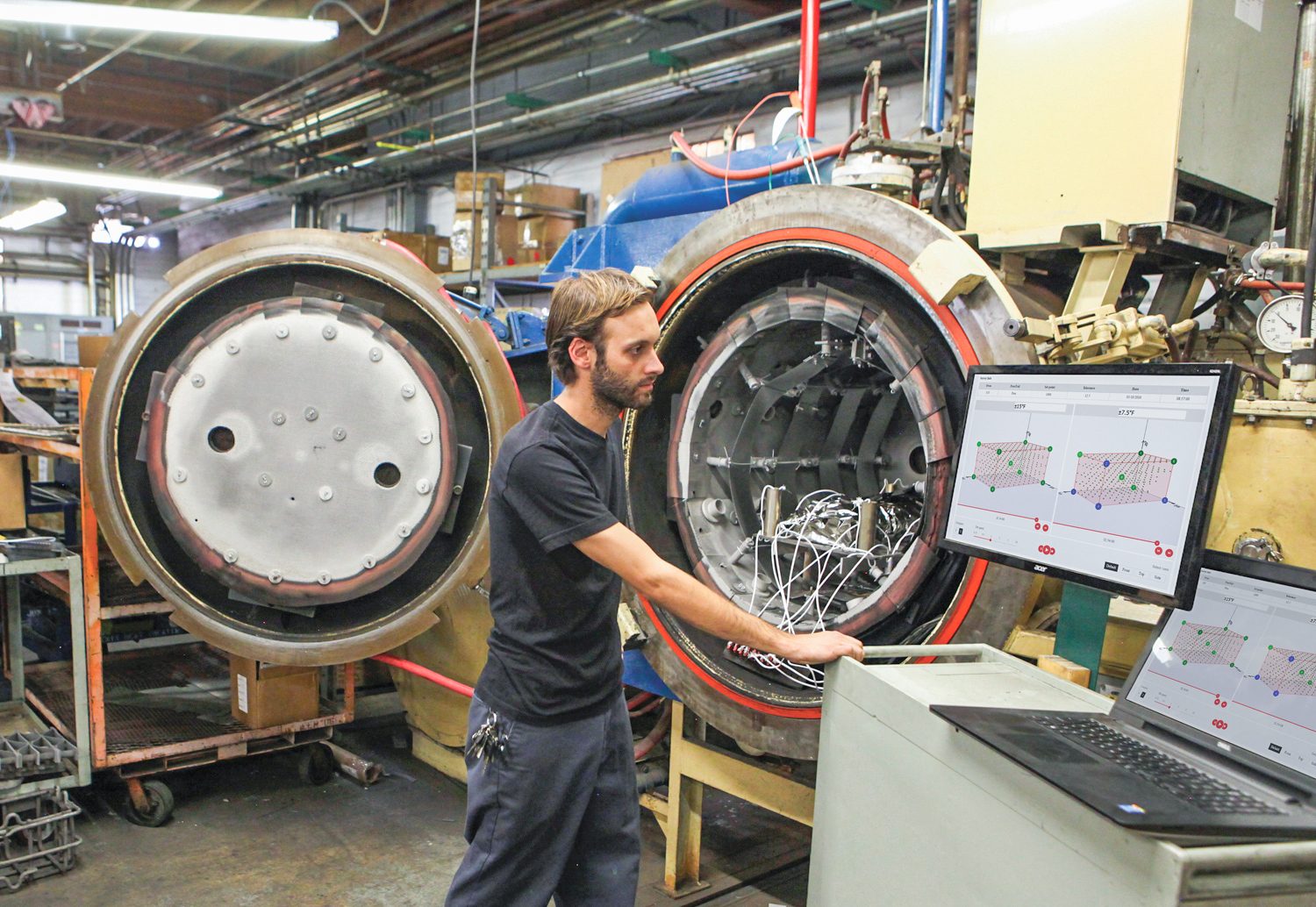TECHNICAL TALK
Temperature Uniformity
David Pye – Pye Metallurgical International Consulting
Temperature uniformity within a furnace can be defined as: “a uniform temperature set to operate within a specific tolerance band to create conditions under which a final uniform resulting metallurgy will be accomplished in the treated component.”
Your eyes can be a valuable resource in estimating the furnace temperature. Practice observing the color of the furnace in relation to the generated signal/reading on the control instrument.
With practice, you can become very competent at estimating furnace temperature. It is not by the stretch of anyone’s imagination as being entirely accurate, but it can be simply used as a guide to come within 40-50°F (4.5-10°C) of the setpoint temperature.
I would now like to ask, “What does the thermocouple measure?” The immediate answer that comes to everyone’s mind is that it measures the temperature of the furnace. However, that is incorrect! The thermocouple can ONLY measure the temperature of the “measuring junction” of the thermocouple and nothing else.
Fig. 1. A simple schematic of the basic function of a thermocouple for heat-treatment temperature measurement

For those heat treaters who are not familiar with the requirements necessary for aerospace, I recommend starting with ARP 1962 and AMS 2750. The basic thermocouple and temperature measuring device requirements will require a minimum of two thermocouples: one for temperature control and one for over-temperature control. The over-temperature control is simply to protect the furnace workload from an overshoot in temperature.
The temperature control that is desired, in reality, is at the component itself. When conducting a temperature uniformity survey, the minimum requirement to establish the degree of temperature variance within the process chamber is nine thermocouples.
Once you have defined the area, label the front door of the furnace with the dimensions and the locations of the accurate temperature uniform zone within the process chamber. All work then must be processed within that defined envelope.

Fig. 2. Schematic of a thermocouple temperature measuring system
Conduct the temperature uniformity survey (TUS) on the furnaces each week. Be sure to remember to conduct the TUS anytime that a repair has been completed on the furnace. This includes:
- Door seal replacement
- Element repair (or replacement of a gas burner)
- Refractory repairs
- Thermocouple replacement
- Air-circulation system repairs
Remember to place the thermocouple as close to the workpiece or load without the thermocouple interfering with the loading and unloading of the load or individual component. Also, be sure that you replace a thermocouple with the same type of thermocouple as the one that is being replaced.
It is a very simple (but necessary) occurrence that the outside temperature of the component begins to heat, with the core of the component coming up to the process component temperature.
The general rule for estimating the desired soaking time for the component is one minute per inch of maximum cross section at the desired setpoint temperature.
Fig. 3. Nine-point thermocouple temperature uniformity survey being prepared


Fig. 4. Vacuum furnace temperature uniformity survey
Courtesy of VVS, a Division of Thermal Innovation Technology, Inc.
Image courtesy Rick Dettlinger from his video: https://youtu.be/uXQTHE4nxOU
Conclusion
As can be seen, the subject of temperature measurement and temperature uniformity is vital to the success of the heat-treatment process for both ferrous and nonferrous metals. It is a critical item of concern for aerospace applications since we are venturing into the realm of space travel. Heat treatment and metallurgical processing demand temperature measurement and uniformity accuracy.
All figures/graphics provided by the author, except where noted.
David Pye
Pye Metallurgical International Consulting
David Pye is a contributing writer. He can be contacted at 757-968-1007, pye_d@ymail.com or www.heat-treatment-metallurgy.com.



